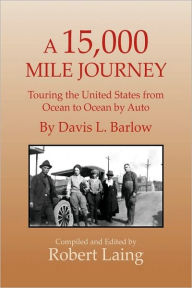
- Browse Category
Subjects
 We Begin at the EndLearn More
We Begin at the EndLearn More - Choice Picks
- Top 100 Free Books
- Blog
- Recently Added
- Submit your eBook
password reset instructions

There is no better way to see America than on foot. And there is no better way to appreciate what you are looking at than with a walking tour. This walking tour of Salisbury, Maryland is ready to explore when you are. Each walking tour describes historical, architectural landmarks, cultural sites and ecclesiastic touchstones and provides step-by-step directions.
Every tour also includes a quick primer on identifying architectural styles seen on American streets.
Salisbury Towne was created by an act of legislation introduced by John Caldwell to create a county seat for Somerset County. Caldwell claimed that “there is a very convenient place for a town at the Head of the Wicomico River.” Its identical physical character and nationality of the founders have convinced most historians the village’s name was borrowed from the ancient cathedral city of Salisbury, England. A defect in the original town charter and the shallow harbor retarded growth for several decades. But by the 1750s Salisbury was a prosperous town, influenced in part by its chief promoter Caldwell who built the first dam on the east branch of the Wicomico and a bridge over the north branch.
During the 19th century, Salisbury was an active seaport, second only to the City of Baltimore and had been dubbed “the Hub of Delmarva. By 1817, the Downtown area had begun to emerge. The development concentrated itself along Bridge Street (Main Street), Dividing Street (Division Street),
and Church Street. When the railroad lumbered down the Delmarva Peninsula in the Civil War it terminated at Salisbury, further enhancing its status as the destination city of the Eastern Shore. Incorporated in 1854, Salisbury became the seat of government when Wicomico was carved off from Somerset and Worcester Counties in 1867.
The face of Salisbury today was influenced by two great fires. The first swept through the central business district in 1860, effectively wiping away the City’s Colonial-era building stock. The commercial core was immediately rebuilt but on October 17, 1886 a small fire was discovered on Dock Street, now Market Street. The flames spread rapidly, so much so that the towns of Crisfield, Pocomoke City and Wilmington, Delaware loaded their fire department steamers on special railroad trains and sent them to Salisbury’s aid. It took 17 hours to control the fire but over 200 buildings were lost. Only one building survived in the center of the City.
Afterwards city zoning law required that important buildings be made only of stone and brick as Salisbury roared back. With the coming of the automobile and its central spot on the lower Eastern Shore cemented the city’s position as the largest city on the Eastern Shore. Our walking tour will start at that sole surviving building of the Great Fire of 1886 then explore the downtown area and finish in one of the original sections of Salisbury that has been made a historic district...
Less- Publication date
- Language
- ISBN
- January 15, 2016
- English
- 6af9dcd9-2304-4f3e-82de-693047599892











.jpg)















